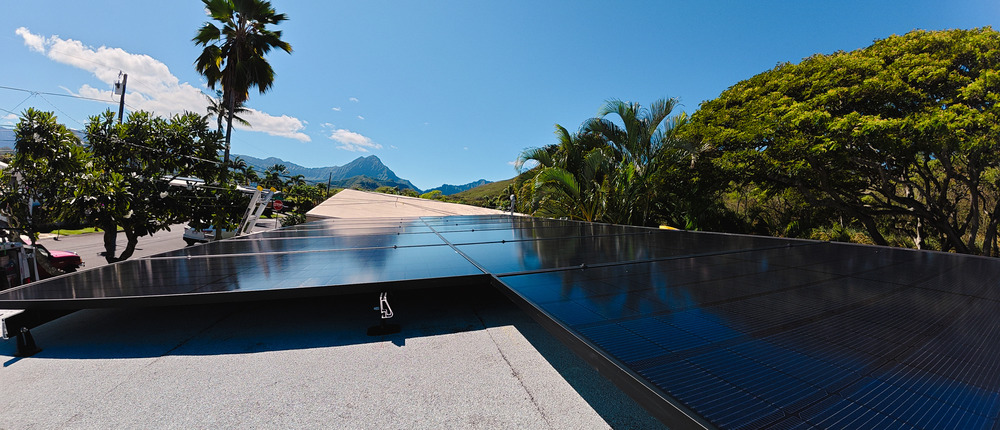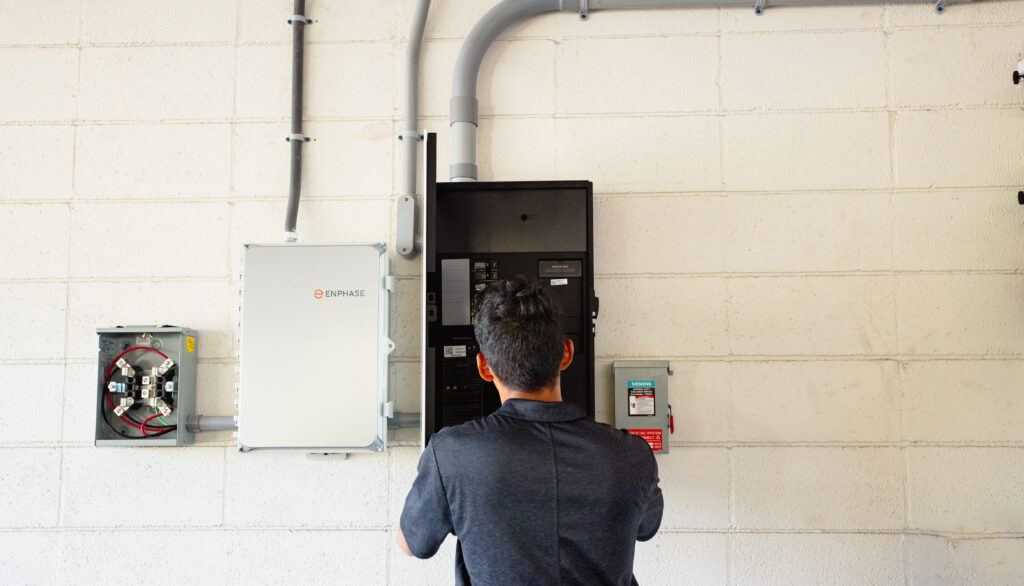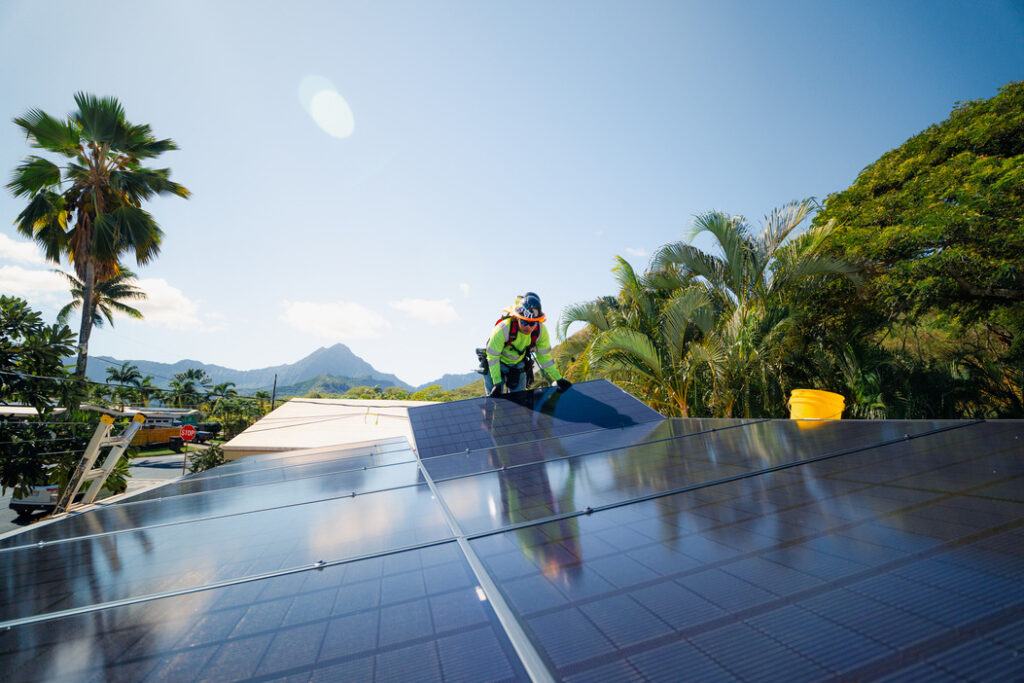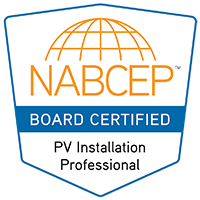Don’t Fall for These Solar Buying Mistakes: A Buyer’s Guide

Switching to solar is a significant investment, often second only to purchasing a home. While the benefits are undeniable—lower energy bills, environmental sustainability, and energy independence—navigating the process can be overwhelming. Making the wrong decisions can lead to unexpected costs, inefficiencies, or even regret. To help you avoid common pitfalls, we’ve compiled this guide so you can confidently choose the right solar system for your home.
Misjudging Your Energy Needs

Your solar system should be tailored to your household’s energy consumption. A system that’s too large can result in unnecessary costs, while one that’s too small might not meet your needs—leading to unexpected utility bills. Multiple quotes from solar companies can help you identify the right size system. For instance, one contractor may recommend 50 panels while another suggests 20. Understanding this difference requires careful evaluation of your current and future energy consumption, such as the potential addition of an electric vehicle or more appliances.
Ignoring Roof Suitability for Solar
Overlooking roof condition, direction, and shading can reduce solar efficiency and increase costs. Your roof is an essential factor in the performance of your solar system, and not all roofs are ideal for solar panel installation. Failing to consider roof-related factors can lead to inefficient energy production, or worse, added installation costs. Additionally, while some roofs may be structurally capable of supporting a solar system, their lifespan may not match the longevity of the system itself. In such cases, re-roofing before solar installation can ensure you get the most out of your investment, maximizing efficiency and minimizing future expenses.Our trained surveyors will thoroughly assess your roof’s health before installation to help you make informed decisions and ensure a seamless solar experience.
Challenges with Older Roofs:
- Dry Rot: Roof decks with dry rot or water damage may not be able to support the weight of solar panels. This issue must be addressed before installation.
- Skip Sheathing Roof: Roofs that use skip sheathing may require additional reinforcement to provide a stable platform for solar panels.
- Roof Pitch: A roof that is too steep or not angled correctly can reduce solar panel performance. In some cases, you may need to install additional racking to adjust the angle of the panels.

How to avoid this mistake:
- Have a professional roof inspection to ensure that your roof is in good condition and suitable for solar panel installation.
- Discuss necessary repairs or upgrades before installation to avoid unexpected costs later.
- Consider roof direction and shading to maximize the amount of sunlight your panels will receive.
Not Researching Incentives and Regulations
Many homeowners fail to take full advantage of solar incentives, tax credits, and rebates, which can significantly reduce the overall cost of your system.
Hawaii offers various solar tax credits and incentives that can significantly reduce your upfront investment. While these programs may evolve over time, staying informed about the latest opportunities can help you maximize your savings and make the most of your solar journey.
Understanding local regulations is equally important. Verify local building codes, permit requirements, and net metering policies. These ensure your installation is compliant and help you avoid delays or costly mistakes. Net metering allows you to receive credits for excess energy your system produces and feeds back into the grid.
In addition, researching financing options, materials, and solar providers is crucial. Look into customer reviews on platforms like Trustpilot and the Better Business Bureau. Pay attention to how companies handle negative feedback, as it reflects their commitment to customer service and their reliability.
Cutting Costs at the Expense of Quality
Solar systems are long-term investments, so it’s essential to prioritize quality over lower upfront costs. Some companies may push cheaper materials, but doing your research ensures you select durable panels and components that perform well over time.

When shopping for solar panels, it’s tempting to choose the cheapest option to save on upfront costs. However, opting for lower-quality panels can have long-term drawbacks. Cheaper panels often degrade faster, which results in lower energy production over time, reducing the efficiency of your system.
Additionally, lower-quality components tend to require more frequent repairs, which can quickly eat into any savings you made by choosing a cheaper system. The lower lifespan of inexpensive panels also means you may have to replace them sooner than expected, further increasing your costs.
To avoid this mistake, it’s crucial to choose solar panels from reliable manufacturers that offer strong warranties, typically ranging from 10 to 25 years. These warranties not only ensure the longevity of your system but also reflect the quality and durability of the panels. It’s also important to prioritize long-term savings over short-term discounts. While premium panels may come with a higher upfront cost, their higher efficiency, longer lifespan, and lower maintenance needs will ultimately provide better value and more consistent savings in the long run.
Disregarding Monitoring and Maintenance Requirements
While solar panels are relatively low maintenance, having a solar monitoring system is essential to ensure your system operates at peak performance. Monitoring allows you to track the energy output of your system in real time, detect performance issues early, and optimize your energy production.
At Independent Energy, we go beyond installation to offer unparalleled after-installation care. With our commitment to long-term customer support, we provide monitoring systems and a 30-year warranty backed by Solar Insure. This comprehensive coverage includes panels, inverters, optimizers, racking, and labor, as well as resealing and reflashing issues within 3 inches of roof penetrations caused by the solar array. There are no deductibles, subscription fees, and the warranty is fully transferable at no additional charge.
For those opting for battery storage, our extended coverage through Solar Insure includes diagnostics, repair, and labor, as well as the cost of a replacement battery if its capacity falls below 50% between years 11 and 30.
By choosing Independent Energy, you gain peace of mind knowing your solar investment is protected and that performance is consistently monitored. With regular maintenance and detailed insights into your system’s operation, you can ensure maximum efficiency and long-term value for your home.
Overlooking Backup Power Solutions
One of the biggest mistakes homeowners make is relying solely on solar panels without considering battery storage. While solar energy can significantly reduce your reliance on the grid, without storage, you’re vulnerable to power outages, especially during periods of bad weather or at night when your system isn’t producing.
Relying solely on solar panels without considering backup power solutions can leave you vulnerable during power outages. Without battery storage, your system won’t provide electricity when the grid goes down, meaning you’ll be without power even if your solar panels are generating energy. Additionally, solar panels generate electricity during the day, but without a storage solution, any excess energy produced is wasted rather than saved for when you need it most, such as during the evening or in case of an outage.
To ensure you’re prepared, consider adding a solar battery storage system, like the Tesla Powerwall, to store excess energy for use at night or during power outages. It’s also important to evaluate whether backup power is necessary, based on how often outages occur in your area. Lastly, check your utility’s net metering policies, as some utilities allow homeowners to sell excess energy back to the grid, providing an opportunity to offset costs and make your system even more cost-effective.
Failing to Plan for the Future

As your energy needs grow or solar technology advances, you’ll want your solar system to be flexible enough to accommodate changes. Overlooking the potential for future energy demands or technological advancements could limit your system’s ability to meet evolving needs.
Not planning for future energy needs or advancements in solar technology can limit the long-term effectiveness of your system. If your setup isn’t designed for scalability, upgrading or expanding it later may be expensive and complex. Additionally, as solar technology evolves, a system that isn’t adaptable may quickly become outdated or inefficient.
To address this, choose a scalable solar system that can grow with your energy needs, especially as you add energy-efficient appliances or electric vehicles. Make sure your system is compatible with future technological advancements, and stay informed about solar trends to ensure your setup remains efficient and up to date.
Read the Contract
Before committing to any solar installation, it’s essential to carefully review the solar contract. Look beyond the monthly payment and focus on the total contract price, warranties, and whether the agreement is a loan, lease, or power purchase agreement (PPA). This will help you avoid unexpected costs and ensure you’re making a sound investment.
Remember to watch for:
- Total contract price: Don’t just focus on monthly payments; understand the full cost, including any hidden fees that may increase your overall investment.
- Warranties: Ensure the contract covers performance, materials, and labor to protect you from costly repairs or replacements down the road.
- APR and financing terms: Pay attention to interest rates, payment escalators, and any other hidden costs. These can significantly affect the long-term cost of your system.
By thoroughly understanding the terms and conditions, you’ll be better prepared to make an informed decision and avoid surprises down the road.
Failing to Compare Apples to Apples
Comparing quotes from different solar companies can be tricky. To ensure you’re making a fair comparison, it’s important to compare identical setups. Differences in panels, inverters, warranties, and financing options can significantly affect the total cost and long-term performance of your system.
Ensure all contractors are quoting on similar solar panel models, inverters, and warranties. Comparing quotes is about more than just pricing. Ensure you’re looking at similar specs, such as the type of panels, inverters, and warranties. If you’re comparing financing options, a 10-year loan will have a different monthly payment than a 25-year loan, but the total contract price and fees may reveal the true value. Ask companies for quotes based on similar setups so you can make a fair comparison.
By avoiding these common mistakes and ensuring you compare on equal terms, you’ll be better prepared to make a solar investment that aligns with your energy goals and provides long-term savings.
By avoiding these common solar buying mistakes, you’ll be better prepared to make an informed decision that aligns with your energy goals, budget, and future needs. Whether you’re a first-time solar buyer or looking to upgrade your existing system, careful planning and research are key to maximizing your return on investment.
Ready to make the switch? Contact Independent Energy Hawaii today for expert guidance and a solar system tailored to your unique needs.






